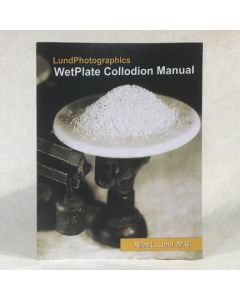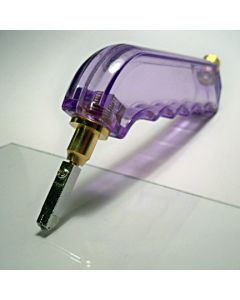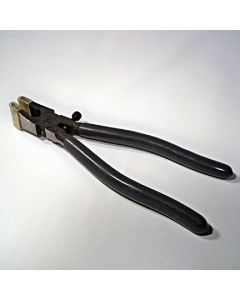Making Ambrotypes
An ambrotype is essentially a tintype on glass. The major difference is in the preparation of the glass that will receive the collodion. This begins with cutting the glass to an appropriate size for your film holder. It always prudent to under size the plate by about 1/16" on each side to allow for uneven cuts or rough edges and, because you'll be cutting by hand, plates that might be a little bit out of square.
A glass cutter is used to cut the plate. The cutter uses a hardened metal wheel to score the surface of the plate. A pair of running pliers are then used to apply pressure to each side of the scored line causing the glass to crack along this line. Once the plate has been cut to size, a whet stone is used to smooth off all of the sharp edges. This serves two purposes: the first of which is to reduce the risk of cut fingers, and the second is to provide a roughened edge to which the collodion is more likely to stick.
After the edges are ground, the next step is to clean, clean, clean. Place the plate in a cleaning vise or hold it firmly on a table top. Dampen a paper towel with water or alcohol and dab it into a container of whiting (chalk dust). The whiting acts as a mild abrasive and is used to scour the surface of the glass, removing oils and other contaminants while micro abrading the surface of the glass, creating a little texture to which the collodion can better adhere.
The rest of the process is identical to making a tintype and if all goes well you'll have a lovely ambrotype. But sometimes things don't always go according to plan. The most frequent failure regarding ambrotypes is lifting and peeling. This is when the collodion film fails to stick, and separates from the glass during processing or later during drying. Once this happens, there's little that can be done to remedy the situation. If you do bump into this, there are a couple of things you can do to prevent it from happening on the next plate. First on the list is to apply an albumen subbing to the glass and letting this dry prior to applying the collodion. This can applied to the entire surface of the plate or just to the edges. Another option is to add additional alcohol to the collodion which reduces the amount of shrinkage when it dries, and thus reduces the risk of peeling.




